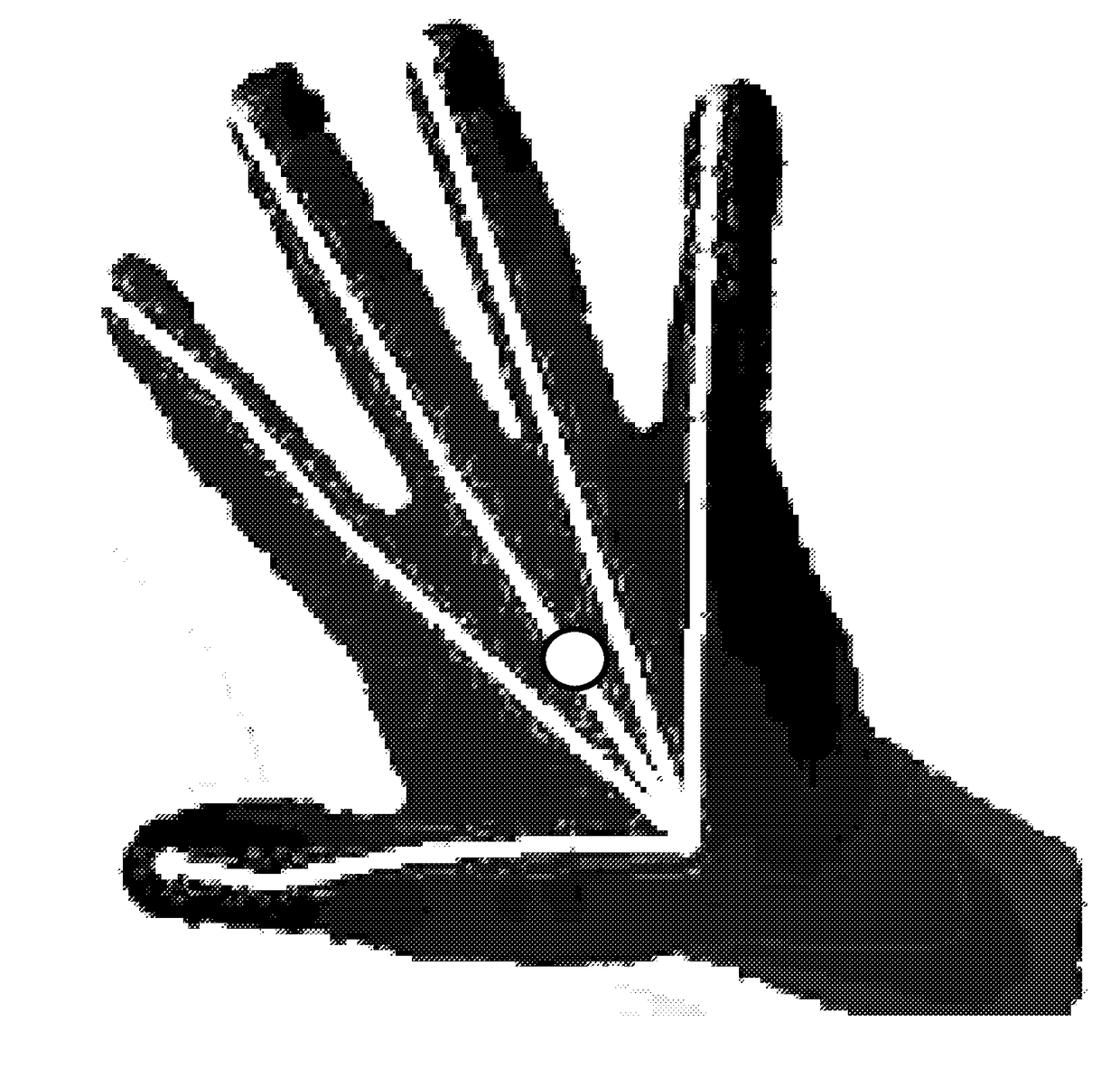Fingertip identification for gesture control
a fingertip and gesture control technology, applied in the field of fingertip identification, can solve the problems of affecting the stability of the skeletal approach, affecting the interaction, and affecting the accuracy of the fingertip tracking,
- Summary
- Abstract
- Description
- Claims
- Application Information
AI Technical Summary
Benefits of technology
Problems solved by technology
Method used
Image
Examples
Embodiment Construction
[0069]Ghost Hands
[0070]‘Ghost hands’ is a user interface paradigm for using 2D and 3D user interfaces with fingertips. The fingertips are scanned or detected using a 3D or depth sensing camera system such as an Intel Real Sense or Microsoft Kinect. A 3D or depth sensing camera system typically includes a conventional camera, an infrared laser projector, an infrared camera, and a microphone array. The infrared projector projects a grid onto the scene (in infrared light which is invisible to human eyes) and the infrared camera records it to compute depth information. A stereoscopic camera system is another example of a 3D or depth sensing camera system.
[0071]The Ghost Hands solution is applicable, for example, to desktop, Augmented Reality, Virtual Reality and Tabletop Mixed Reality scenarios. For example, where the 3D or depth sensing camera is mounted in the bezel of a laptop or tablet—where a 3D or depth sensing camera is mounted onto a wearable device, such as a stereoscopic heads...
PUM
 Login to View More
Login to View More Abstract
Description
Claims
Application Information
 Login to View More
Login to View More - R&D
- Intellectual Property
- Life Sciences
- Materials
- Tech Scout
- Unparalleled Data Quality
- Higher Quality Content
- 60% Fewer Hallucinations
Browse by: Latest US Patents, China's latest patents, Technical Efficacy Thesaurus, Application Domain, Technology Topic, Popular Technical Reports.
© 2025 PatSnap. All rights reserved.Legal|Privacy policy|Modern Slavery Act Transparency Statement|Sitemap|About US| Contact US: help@patsnap.com



